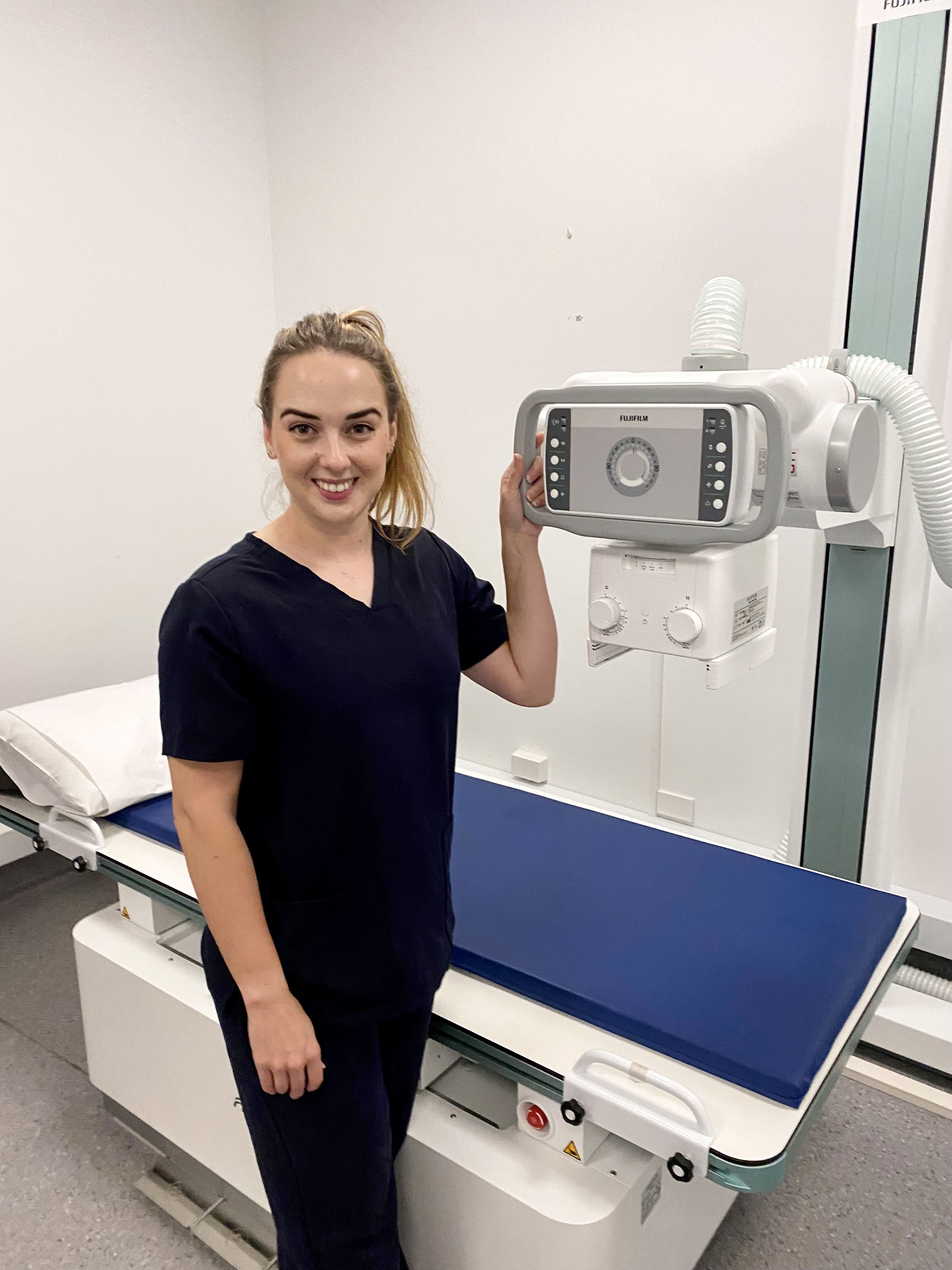A radiographer’s experience in Australia
After the stress of working through the Covid pandemic, diagnostic radiographer Charlotte Slater went in pursuit of a new challenge. Here she shares her experiences from a year spent working in Australia
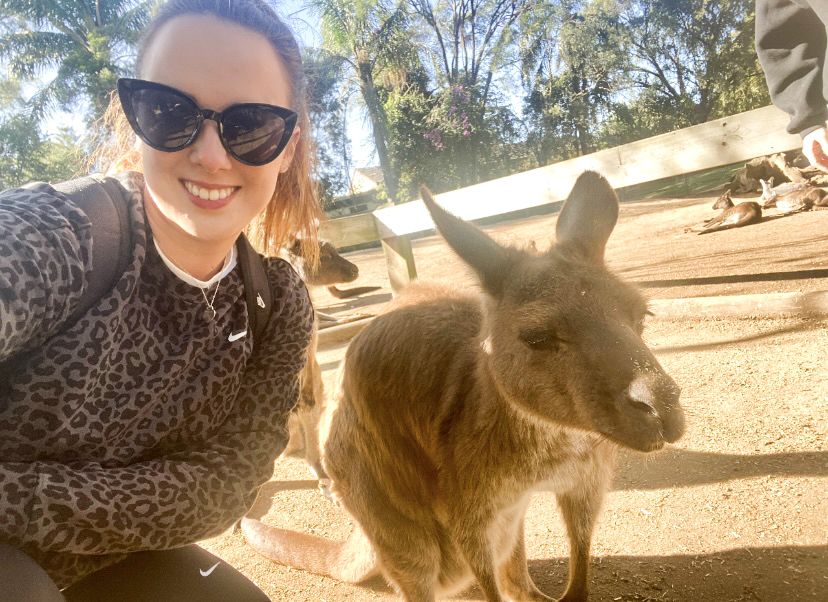
I qualified as a radiographer in 2018 after studying at the University of Liverpool.
Australia is a place I’ve always wanted to visit and I knew that practising radiography would open an opportunity to not only work over there, but travel and explore too.
During the 2020 Covid pandemic, like many other colleagues and healthcare professionals, I began to feel tired and burned out.
As much as I loved my job working at Mersey and West Lancashire Teaching Hospitals NHS Trust, I was beginning to feel like I needed a change and a new challenge. I did not know what direction to take my career in and I think the period of the pandemic really heightened this feeling for me and I'm sure many others too.
I had two friends that were physiotherapists who felt the same, and we decided to look into working in Australia. At first it seemed like a lot of work and we had no idea where to start. However, we thought what an amazing opportunity it would be if we could get there and this motivated us to explore the option, and so in spring 2022 we started to plan.
There was limited information online in terms of guidance or blogs from other radiographers that had done similar. I found some information regarding doctors and nurses but not really anything for radiographers, so I hope that by sharing this article I can help other radiographers wanting to try work in Australia but don’t know where to start.
I qualified as a radiographer in 2018 after studying at the University of Liverpool.
Australia is a place I’ve always wanted to visit and I knew that practising radiography would open an opportunity to not only work over there, but travel and explore too.
During the 2020 Covid pandemic, like many other colleagues and healthcare professionals, I began to feel tired and burnt out.
As much as I loved my job working at Mersey and West Lancashire Teaching Hospitals NHS Trust, I was beginning to feel like I needed a change and a new challenge. I did not know what direction to take my career in and I think the period of the pandemic really heightened this feeling for me and I'm sure many others too.
I had two friends that were physiotherapists who felt the same, and we decided to look into working in Australia. At first it seemed like a lot of work and we had no idea where to start. However, we thought what an amazing opportunity it would be if we could get there and this motivated us to explore the option, and so in spring 2022 we started to plan.
There was limited information online in terms of guidance or blogs from other radiographers that had done similar. I found some information regarding doctors and nurses but not really anything for radiographers, so I hope that by sharing this article I can help other radiographers wanting to try work in Australia but don’t know where to start.
Preparing for Australia
I spent a lot of time researching and emailing agencies in Australia to try and figure out where to start - the first thing was to ensure that I had all the relevant documents.
This included: my radiography degree, university transcript, police check and passport. In order to apply to the Australian registration board - the Australian Health Practitioner Regulation Agency (AHPRA, Australian equivalent of the Health and Care Professions Council in the UK), several of these documents also needed to be certified by a notary.
Once the documents were certified, I wrote an updated CV that had to meet AHPRAs format and collected several professional references from my current employer.
It was important that I could demonstrate my radiographic and professional skills that would meet AHPRAs standards to practise over there (these can be found on their website).
An important step was ensuring I had up to date Covid vaccination records and general vaccination records, like hepatitis B, tetanus and flu.
Coming from overseas meant I needed to prove I was safe to be in hospitals and healthcare environments so I would definitely make sure all the relevant vaccines are up to date.
Once I had collected all the relevant documentation, I filled out the required form online and paid the fees. This was quite expensive however I did not need to do any exams or extra courses to be able to register as I had been qualified for four years with experience in both X-ray and CT. Luckily the training in the UK meets Australia's radiography standards.
The visa I applied online for was the Working Holiday visa, subclass 417, open to people aged 18 to 30 looking for an extended holiday and hoping to work in Australia to fund it, and this was granted instantly. It again came with a cost but it would allow me to travel around Australia. There are several visa options available, but the Working Holiday visa 417 was the best option for me, because it only became active when I arrived in Australia, which gave me time to sort out flights, career break paperwork and sort everything I would need to take with me before I left.
Fortunately I was granted a sabbatical from my employer which I was so grateful for. I liked my job and the people I worked with. I was also not sure how long I would stay in Australia or if I would like it. It was reassuring to know I still had my job to return to. By experiencing radiography in Australia, I hoped that I would learn some valuable skills to take back to my NHS role.
A few months went by and I was still working in the NHS and finally my AHPRA was provisionally granted, but to get my full registration there were a few more steps I needed to complete once in the country. I was so excited for this opportunity, but also so nervous to leave a job I knew so well.
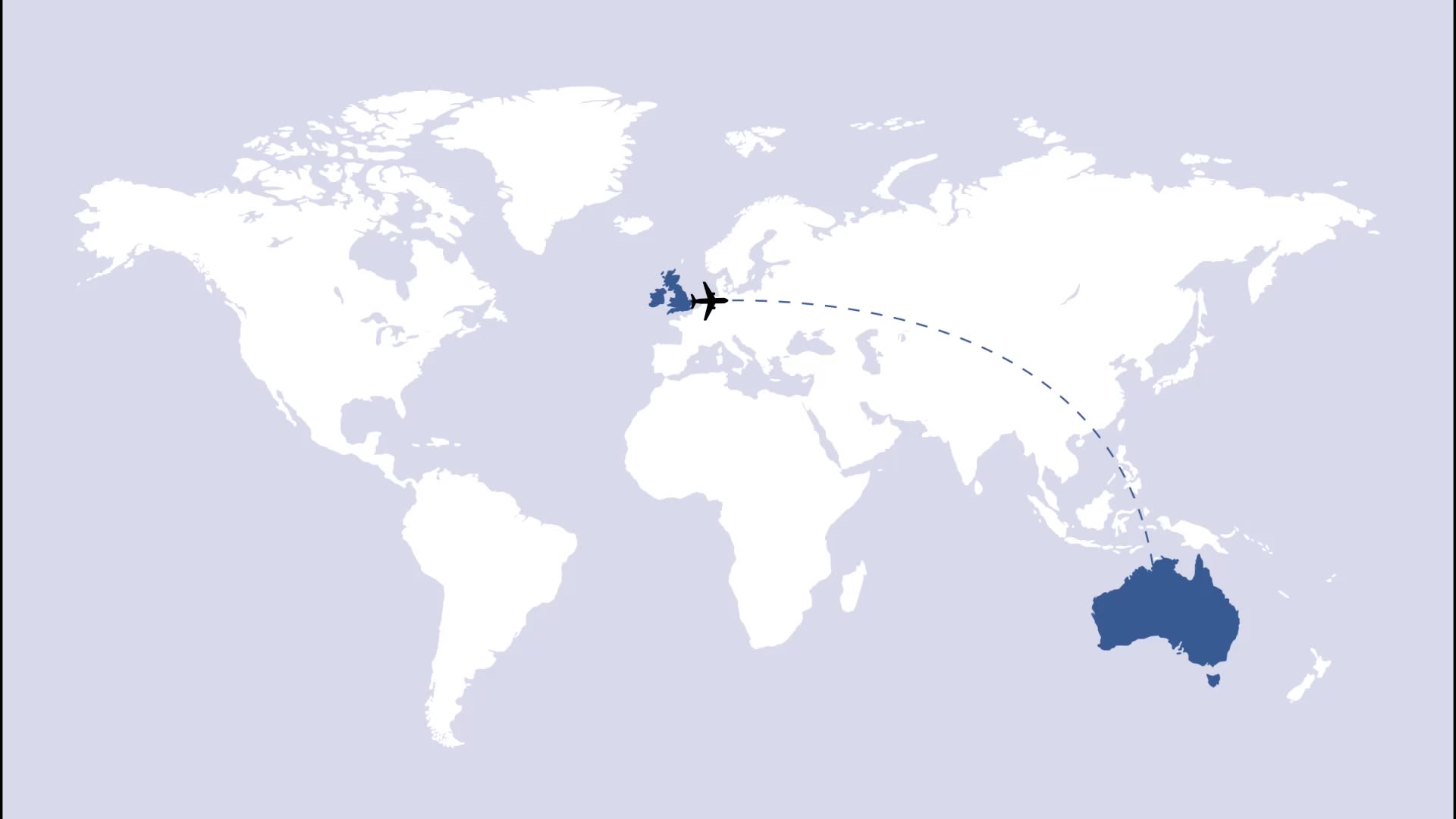
Work and travel
I arrived in Sydney in November 2022, just in time for summer. For the first few weeks I explored Sydney doing all the touristy things and finalising the last bits needed for working as a locum radiographer: things like bank account, Australian phone number, tax pin, indemnity insurance and Working With Children Check (WWCC).
The last step for AHPRA is a video interview where you present yourself and your passport for a final ID check. Not long after this my AHPRA registration was granted and I was ready to work.
Finally in order to practise I needed to obtain a radiation licence via an online application. In Australia, most states require a radiation licence as well as AHPRA accreditation to be able to practise. This can be frustrating when you want to move around to work in different states, but you are now able to apply for mutual recognition across states.
After receiving all my documentation and several hurdles later I was finally ready to start looking for casual work. I had found some agencies online, signed up to job sites like Indeed and Seek, and I networked on LinkedIn with some prospective locum employers.
Requirements for working as a radiographer in Australia:
- Certified documents
- AHPRA accreditation
- Working Holiday visa 417
- Indemnity insurance
- Australian bank account
- Tax pin
- Radiation licence
- Working with Children Check (WWCC)
A daunting challenge
For my first role in Australia, I was so nervous and apprehensive but ready for the challenge. Unfortunately it was difficult for my two physio friends and I to find work in the same area as job demands varied.
So I took my first short locum job on my own, which was terrifying but I fully embraced the opportunity. I was doing CT and X-ray in a small rural public hospital in New South Wales. I felt like I was in the middle of nowhere when I arrived on the bus.
It was very different from the type of fast paced hospital I was used to. The equipment, protocols, workflow - everything seemed so different and I felt so out of my depth with everything changing at once. It really did push me out of my comfort zone, which on reflection now was probably the best thing I could have done for myself.
In Australia, healthcare is not ‘free’ like the NHS and I began to realise how lucky we are to have our health service when I saw the cost of some of the examinations. I was taught how to use some of the new equipment which was great for my skill development. I learned new X-ray views and techniques - often extra views are done in Australia so this took some getting used to.
Although at times stressful and overwhelming, I learned so much there and made some friends which was great as I had company when I had days off.
I lived in hospital accommodation by the hospital with other locums, it was a nice friendly place I won't forget. I’d definitely recommend working with a locum agency as they sort a lot out, ensure you're paid correctly and can recommend jobs that suit your skills.
Christmas and New Year were spent in Sydney which was amazing. We had some travel plans up the east coast in the pipeline and potentially a short locum but we really wanted to see more of Australia.
Later in the year, I worked in a private practice which was a good experience as it was something I had not done before and again different to the NHS. Locum work can be unpredictable and often has to fit in with travel plans and this is not always possible.
However I think if I was to do it again I would stay for longer in one place as you have more time to settle. With locum work you do not always know how you will find it until you get there, so it can be difficult especially in a foreign country.
Christmas and New Year were spent in Sydney which was amazing. We had some travel plans up the east coast in the pipeline and potentially a short locum but we really wanted to see more of Australia.
Later in the year, I worked in a private practice which was a good experience as it was something I had not done before and again different to the NHS. Locum work can be unpredictable and often has to fit in with travel plans and this is not always possible.
However I think if I was to do it again I would stay for longer in one place as you have more time to settle. With locum work you do not always know how you will find it until you get there, so it can be difficult especially in a foreign country.
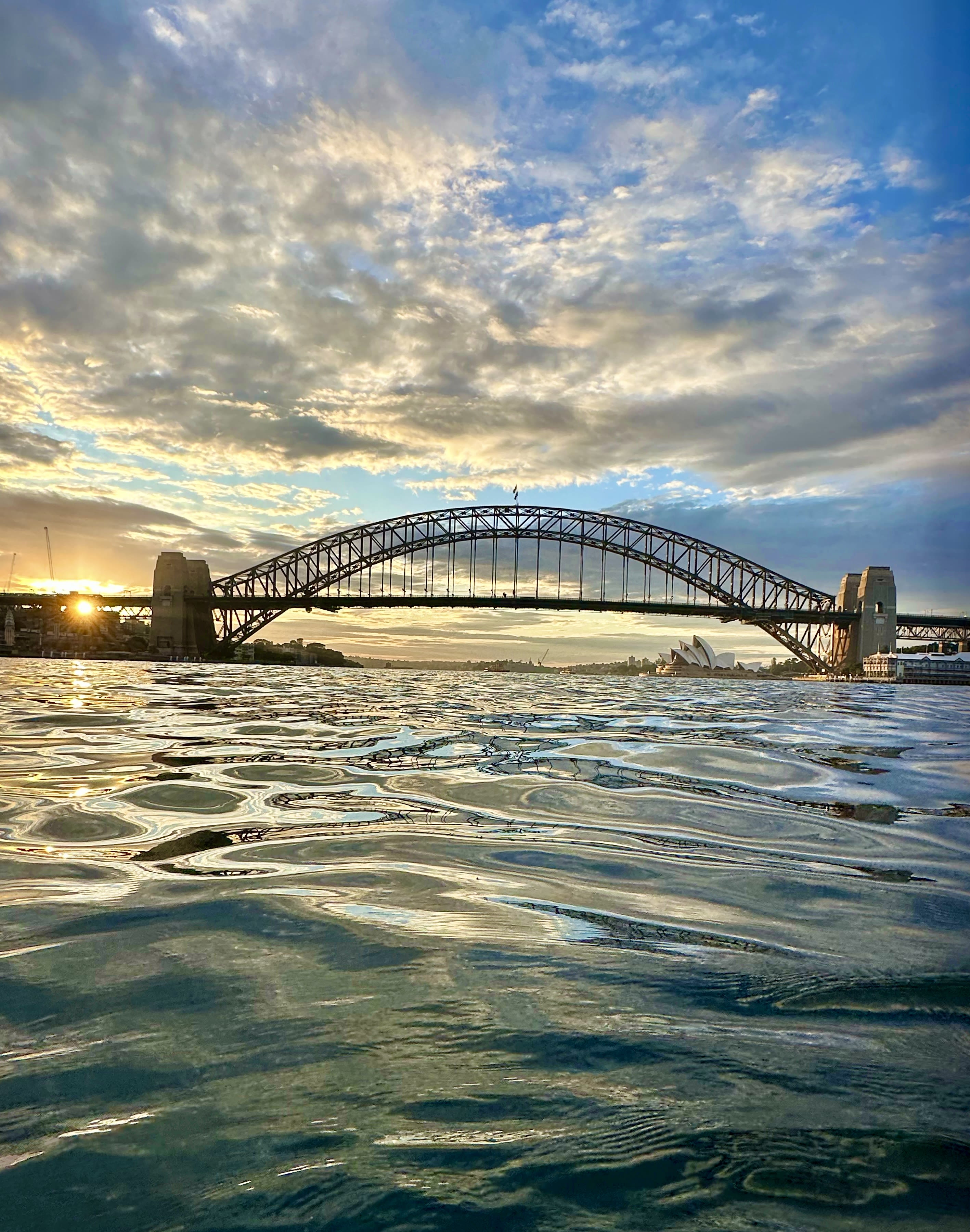
Different practices in UK and Australia
Radiography practices in the UK and Australia share fundamental principles in medical imaging, yet subtle differences exist in their approaches and healthcare systems.
In the UK, the NHS plays an essential role in providing medical imaging, which is characterised by a standardised framework and a national curriculum for radiographers during a three-year undergraduate degree.
Australia's healthcare system, in contrast, is a mix of public and private sectors, offering patients a choice between government-funded healthcare and private healthcare providers.
This can often mean wait times are significantly reduced and more patients are imaged.
However this comes at a cost through private insurance or medicare. This duality impacts radiography, as practitioners may experience varied work environments and equipment standards.
There is also flexibility in hours which allows those with families or other commitments the ability to manage their work life and job satisfaction/ expectations.
Many job opportunities in Australia offer incentives of up-skilling employees in other modalities (ie MRI), which is an incentive that is not always available in the NHS due to funding.
The NHS does provide funding for reporting courses - something that is not in the Australian scope of practice currently. Furthermore, many Australian practitioners are skilled in multiple modalities such as CT, mammography and bone density scanning, which allows a greater flexibility within the workforce and a varied work life.
Australia's focus on continuous professional development and training programmes within the radiography field, in both private and public sectors, could serve as a model for the NHS to further invest in ongoing education and skill enhancement for its radiographers.
The NHS has a great online e-learning platform that provides CPD for radiographers. The SoR also provides events and courses as well as yearly conferences. This is similarly provided by the Australian Society of Medical Imaging and Radiation Therapy (ASMIRT) in Australia.
By adopting the latest advancements in medical imaging techniques, work flow and modalities used in Australia, the NHS could explore and evolve necessary changes to radiographic practice. This could potentially improve diagnostic accuracy and patient outcomes such as investment in artificial intelligence and outsourcing reporting to off-site radiologists.
In Australia many practitioners work under protocols written by a radiologist, elevating the need for a radiologist to vet every request so they can spend more time reporting. This ensures radiographers must be knowledgeable of correct protocols and procedures.
The undergraduate programmes in Australia are also four years, with the fourth year acting as a practical year before graduating. This aims to give students confidence in their practical abilities and more experience in the healthcare setting ensuring they are at a high professional standard to begin work.
In both countries, professional organisations such as the Australian Institute of Radiography (AIR) and the Society of Radiographers and College of Radiographers in the UK, contribute to the development and maintenance of high standards within the respective countries.
While both nations uphold precise quality assurance measures, subtle differences in training programmes, equipment, and organisational structures highlight the diverse healthcare systems in the UK and Australia.
Overall by fostering an exchange of best practices and incorporating successful elements from the Australian radiography system, the NHS could potentially enhance its own radiological services for the benefit of evolving patient needs and healthcare practitioners alike.




Different practices in UK and Australia
Radiography practices in the UK and Australia share fundamental principles in medical imaging, yet subtle differences exist in their approaches and healthcare systems.
In the UK, the NHS plays an essential role in providing medical imaging, which is characterised by a standardised framework and a national curriculum for radiographers during a three-year undergraduate degree.
Australia's healthcare system, in contrast, is a mix of public and private sectors, offering patients a choice between government-funded healthcare and private healthcare providers. This can often mean wait times are significantly reduced and more patients are imaged.
However this comes at a cost through private insurance or Medicare. This duality impacts radiography, as practitioners may experience varied work environments and equipment standards.
There is also flexibility in hours which allows those with families or other commitments the ability to manage their work life and job satisfaction/ expectations.
Many job opportunities in Australia offer incentives of up-skilling employees in other modalities like MRI. This is an incentive that is not always available in the NHS due to funding.
The NHS does provide funding for reporting courses - something that is not in the Australian scope of practice currently. Furthermore, many Australian practitioners are skilled in multiple modalities such as CT, mammography and bone density scanning, which allows a greater flexibility within the workforce and a varied worklife.
Australia's focus on continuous professional development and training programmes within the radiography field, in both private and public sectors, could serve as a model for the NHS to further invest in ongoing education and skill enhancement for its radiographers.
The NHS has a great online e-learning platform that provides CPD for radiographers. The SoR also provides events and courses as well as yearly conferences. This is similarly provided by ASMIRT in Australia.
Adoption of innovative technologies and imaging modalities in Australia may also prompt the NHS to explore advancements that could improve diagnostic accuracy and patient outcomes such as investment in artificial intelligence and outsourcing reporting to off-site radiologists.
In Australia many practitioners work under protocols written by a radiologist, elevating the need for a radiologist to vet every request so they can spend more time reporting. This ensures radiographers must be knowledgeable of correct protocols and procedures.
The undergraduate programmes in Australia are also four years, with the fourth year acting as a practical year before graduating. This aims to give students confidence in their practical abilities and more experience in the healthcare setting ensuring they are at a high professional standard to begin work.
In both countries, professional organisations such as the Australian Institute of Radiography (AIR) and the Society of Radiographers and College of Radiographers in the UK, contribute to the development and maintenance of high standards within the respective countries.
While both nations uphold precise quality assurance measures, subtle differences in training programmes, equipment, and organisational structures highlight the diverse healthcare systems in the UK and Australia.
Overall by fostering an exchange of best practices and incorporating successful elements from the Australian radiography system, the NHS could potentially enhance its own radiological services for the benefit of evolving patient needs and healthcare practitioners alike.
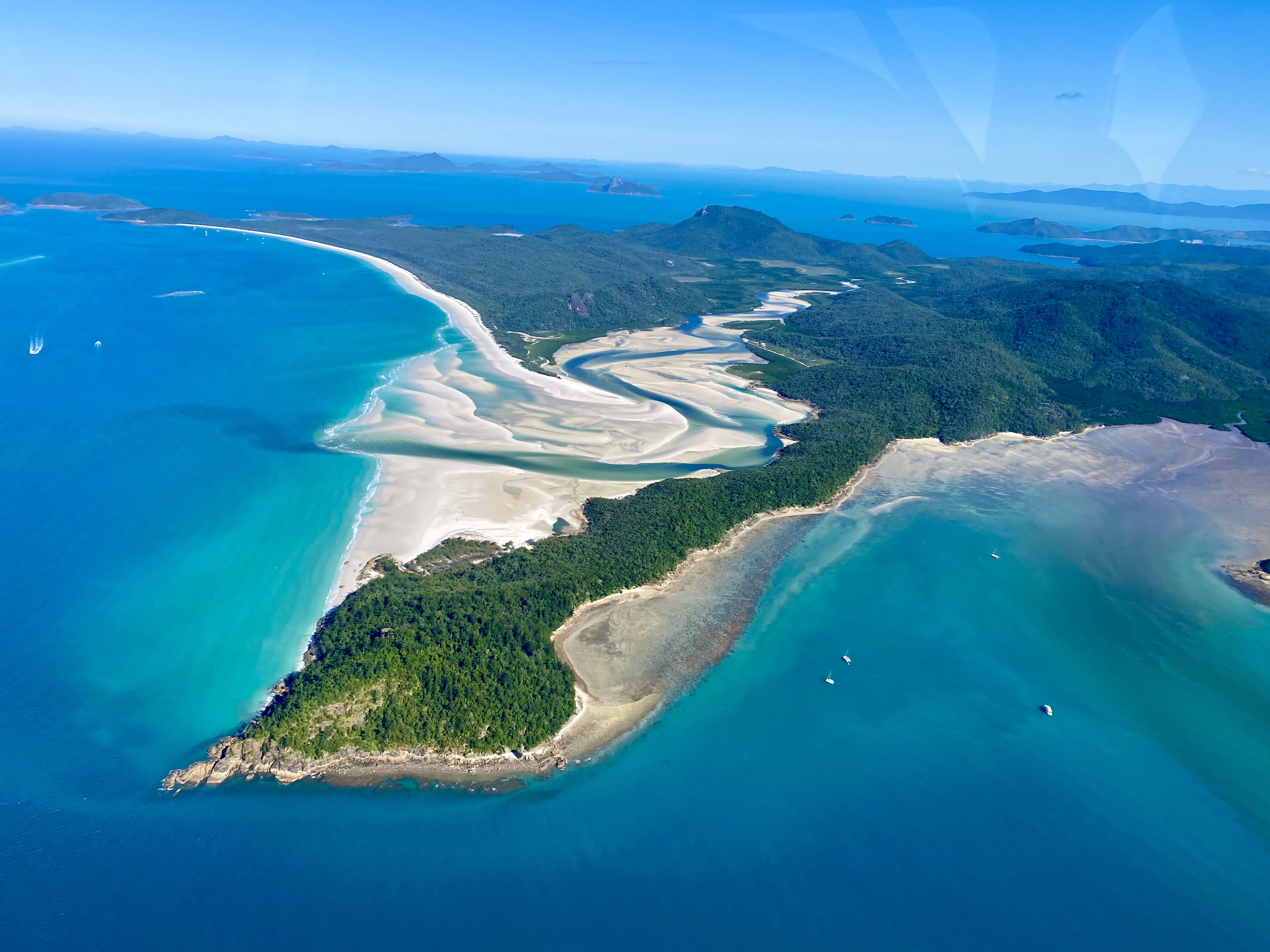
A life-changing experience
On reflection I have developed so much personally and professionally during this time. I have expanded my knowledge and skills, as well as using new equipment and techniques.
During the 12 months I spent in Australia, I travelled around a lot seeing places that I only dreamed of a few years ago.
It was truly a life changing experience, one I will never forget and something I am so glad I did. I have since come back to the UK to my previous role at Mersey and West Lancashire trust, and have decided to go back out to Australia for a while longer as it is a once in a lifetime opportunity.
It was the most amazing first year and I feel there is still so much to see and experience. Radiography wise, I would like to gain more knowledge of different equipment and ways of working out in Australia.
A temporary job in the outback is also something I would like to try, to really see what true rural work is like and experience a different culture.
I think this time away from the NHS has been so important for me to really appreciate it. I hope to bring back what I have learned from this amazing period in my life and career back into my practice in the NHS.
Find out more...
Radiographers can find out more about the requirements for working in Australia via the AHPRA website here.
Image credits: checa/iStock/Getty Images Plus, Ployaung/iStock/Getty Images Plus
Now read...



